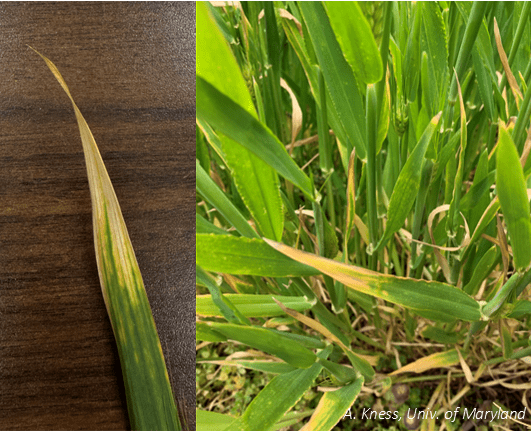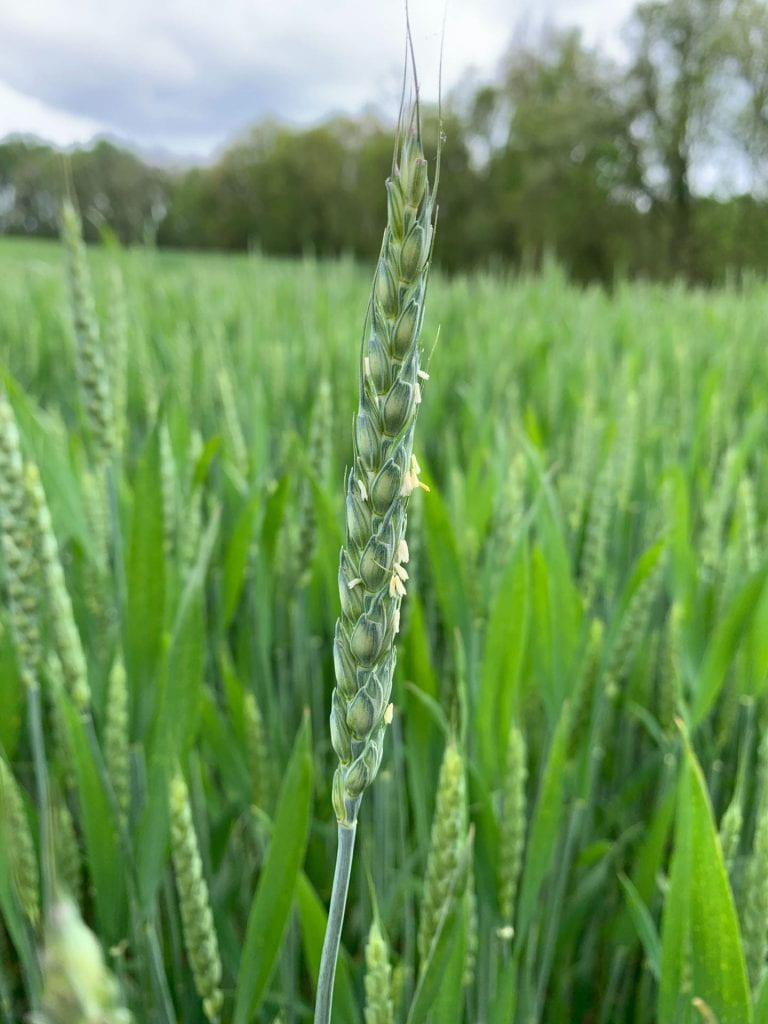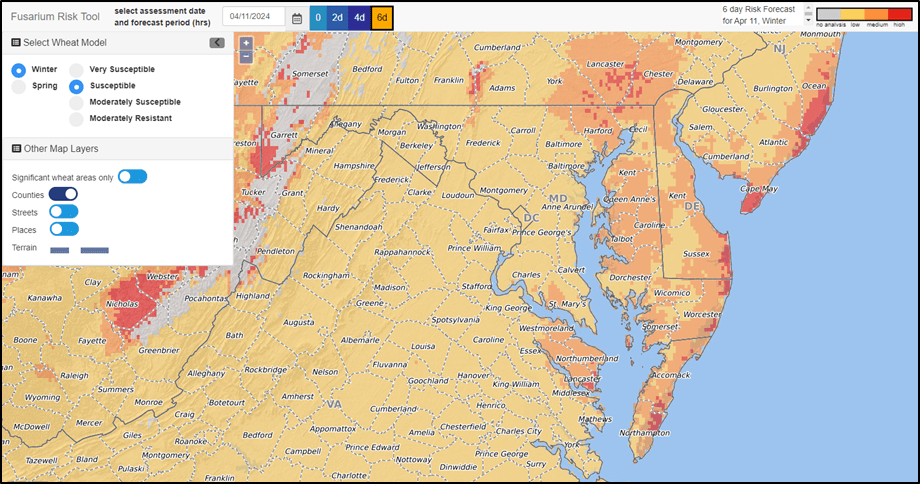Reports are for crop conditions up to May 3, 2024.
Western Maryland
April has brought us many showers. The triticale is all in the silos for the most part, and corn planting has begun. The wheat and the barley are looking good. Producers have a keen eye out for FHB, and thus, fungicide is on the docket. Pastures are looking good and first cutting alfalfa is not far off. Warmer temperatures are on the horizon.—Jeff Semler, Washington Co.
Central Maryland
The wet, cool spring has turned into a hot, dry spring this week. Currently, the highest chance of rain (about 60%) is for this weekend. Planting is in full swing, and the first cutting of orchardgrass will start in a couple weeks. Wheat and barley are heading; if the drier weather keeps up, it will lower the risk for Fusarium.—Kelly Nichols, Montgomery Co.
Northern Maryland
Rain has been hard to come by with only about 1” of accumulated rain in the last 4 weeks. Corn and soybean planting has been in rolling for 2.5 weeks now, with a very large majority of it within the last week to 10 days or so. Small grains generally look very good, pastures and hay fields have also enjoyed the cooler than normal March and April. Wheat is anywhere from boot to head emergence. After a soggy start to April, we could use some rain.—Andy Kness, Harford Co.
Upper and Mid Shore
The rains from early in the month are now just a memory, with clear skies and no significant rainfall since. Dust clouds swirling on the horizon are a clear sign that #Plant2024 is underway. Farmers are terminating their cover crops and tilling the soil, readying it for planting. This year, we’re running a week or two ahead of last year’s schedule, raising hopes for another bumper crop. Small grains are currently heading, with some currently flowering.—Dwayne Joseph, Kent Co.
Lower Shore
After a rainy stretch, we’ve gotten some dry weather this past week. About half or more of cover crop acreage has been terminated. Some ground is being tilled, while the majority will be planted no-till. Corn is currently being planted. Wheat is looking very good. If wheat varieties are susceptible to Fusarium Head Blight and if the wheat is flowering, fungicides should be considered. The first cutting of hay has started.—Sarah Hirsh, Somerset Co.
Southern Maryland
Field conditions are a mixed bag. Areas to the north have turned dry in the last week. Areas to the south received more rain delaying field operations. In drier areas, soil has become hard and compacted, aggravated by wet conditions over the winter. This is a year where big differences in soil conditions can be observed between no-till and tilled fields. Planters have been rolling for the last two weeks with conditions mostly ideal for planting. Corn emergence looks good so far. Slugs were a concern early, but drier weather has helped with that issue. We have many acres of early planted soybeans again this year. Burndown programs have been challenged this year with many escapes of annual ryegrass. Wheat is headed and beginning to flower now. We are observing some yellowing of the flag leaf and leaf below the flag leaf across many fields that showed up in the last 10 days. We are working to determine the exact cause, but believe it related to environmental conditions with perhaps some virus issues like BYDV as well. A lot of good dry hay has been made in the last two weeks. On the fruit and vegetable front, plasticulture strawberries look very good and are ripening now. All of our main season vegetable crops are preparing to go in the ground this week. High tunnel crops are coming off now.—Ben Beale, St. Mary’s Co.








